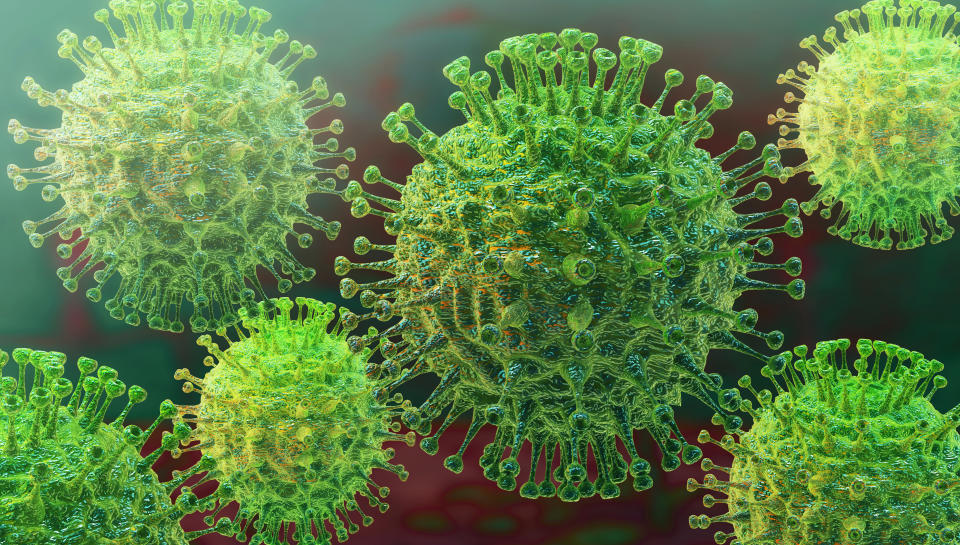Billions of journeys to celebrate Chinese New Year raise fears coronavirus will spread worldwide

Experts fear the enormous number of people making trips as part of Chinese New Year celebrations could cause the deadly coronavirus to spread worldwide.
More than 440 cases of the new strain - 2019-nCoV - coronavirus have been confirmed in Hubei province, of which Wuhan is the capital, and officials have said at least 17 people have died there.
Coronaviruses are not new, with the class of pathogens causing everything from the common cold to epidemics like severe acute respiratory syndrome (Sars).
The New Year celebrations typically last 16 days, starting with a family get-together on New Year’s Eve – which is on 24 January – and ending with the Lantern Festival.
READ MORE: What is the mystery illness affecting China?
The travel rush around the festival is known as “Chunyun” and lasts around 40 days. It is thought around 3 billion trips were taken within China last year.
To put this into context, the annual Hajj pilgrimage to Mecca attracts around 2 million people.
Chunyun, the “world’s biggest mass migration”, includes “citizens travelling home, both within China and from all over the world”.
For many overseas workers, the period is often “the only time they are able to spend with their families”.
“During Chinese New Year travel into China rises by around 30% to 40%,” said Professor Neil Ferguson from Imperial College London.
“Within China it doubles.
“There is a risk coronavirus will spread internationally and to other provinces in China.”

China is the fourth most visited country in the world, with around 60 million international tourists a year.
The city of Wuhan is at the centre of the outbreak, which likely originated from infected animals at a market.
Most of those who initially fell ill worked at, or visited, the market.
China's National Health Commission has confirmed that the virus can spread person-to-person, with patients in major cities like Beijing and Shanghai.
Cases have also arisen in Japan, South Korea, Thailand, Taiwan and the US.
READ MORE: The US has its first confirmed coronavirus case – here’s what you need to know
Prof Ferguson worries the true extent of incidences may be underestimated.
“Wuhan likely has around 4,000 cases,” he said. “It ranges from 1,000 to 9,700.”
This is based on the number of people developing symptoms since 18 January.
“Hospitals are overwhelmed with suspected cases,” he said. “Case numbers are expected to increase rapidly. This may be health authorities ‘catching up’.”
Despite its risk, concerns over 2019-nCoV are not slowing travellers down.
Railway officials expect 440m journeys, up 8% from last year, during Chunyun, Bloomberg reported.
When it comes to air travel, 79m passengers are due to fly into or around China – also an 8% increase on 2019.
At Beijing’s West Station, one commuter said he was not worried.
“It’s not close to here,” the 26-year-old – on his way home for the celebrations – told the Los Angeles Times.
Another, wearing a surgical mask, admitted he was concerned but refused to let it hold him back.
“It’s the New Year, so people are travelling all over the country,” he said.

What is the new coronavirus?
Like other strains of coronavirus, 2019-nCoV typically starts with flu-like symptoms, including fever, cough, shortness of breath and breathing difficulties.
Six previous coronaviruses are known to infect people, with this strain being the “seventh”.
The pathogens are common worldwide, triggering mild-to-moderate upper respiratory tract infections, like the common cold, according to the US Centers for Disease Control and Prevention (CDC).
In rarer cases, coronaviruses can lead to lower-respiratory tract infections, such as pneumonia or bronchitis.
These tend to occur in babies, the elderly or those with weak immune systems.
The 2019-nCoV fatalities are occurring as a result of pneumonia.
This comes about when a respiratory infection causes the alveoli (air sacs) in the lungs to become inflamed and filled with fluid or pus, according to the American Lung Association.
The lungs then struggle to draw in air, resulting in reduced oxygen in the bloodstream.
“Without treatment the end is inevitable,” the charity Médecins Sans Frontières says.
“Deaths occurs because of asphyxiation.”
READ MORE: Novavax working on a coronavirus vaccine candidate as first US case emerges
2019-nCoV is not the first coronavirus that has got people panicked.
The Middle East respiratory syndrome (Mers) strain kills about three or four in every 10 patients, according to the CDC.
Sars also made headlines in the early 2000s after 774 people died across dozens of countries, mainly in Asia.
2019-nCoV has evoked memories of Sars, with genetic analyses revealing it is more closely related to the pathogen than any other coronavirus.
Some coronavirus strains only infect animals but can “jump” to humans.
They commonly spread via coughing, sneezing, shaking hands or touching a contaminated object.
The virus enters the body if contaminated hands touch the eyes, nose or mouth.
In rare cases, faecal contamination is to blame.
There is no specific treatment for coronaviruses, according to the CDC.
If the infection triggers pneumonia, doctors work to combat the complication.
When a virus is to blame – like 2019-nCoV – pneumonia may be treated via “antiviral medication”, according to the American Lung Association.
US health officials are working on a vaccine against 2019-nCoV; however, it will likely be months before the first stage of trials are underway and more than a year before it could be available to the public, CNN reported.
For now, the World Health Organization advises people avoid “unprotected” contact with live animals, thoroughly cook meat and eggs, and stay away from those with flu-like symptoms.
*The death toll was accurate at the time of publication and has since risen.


